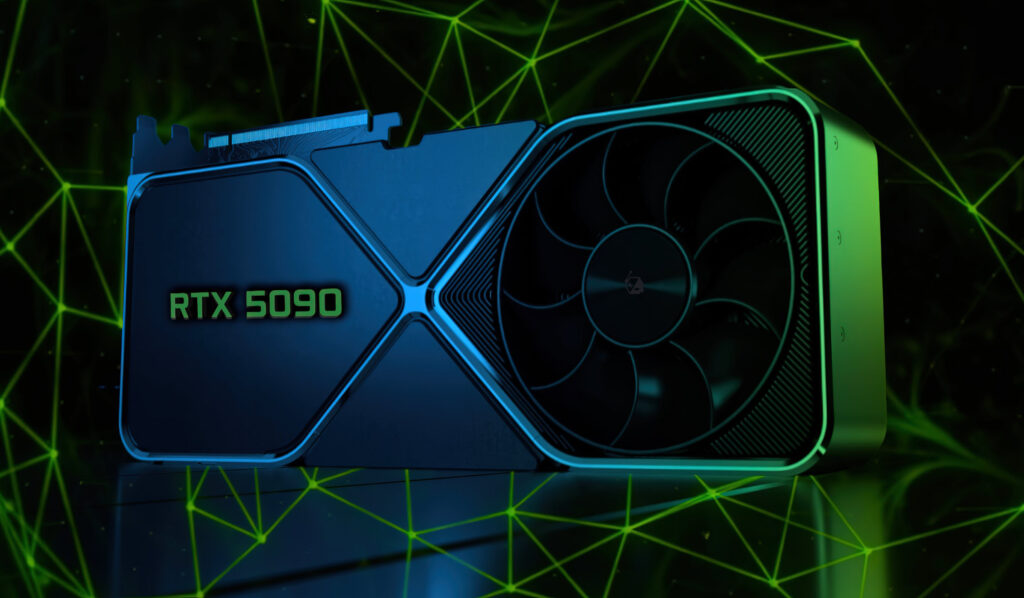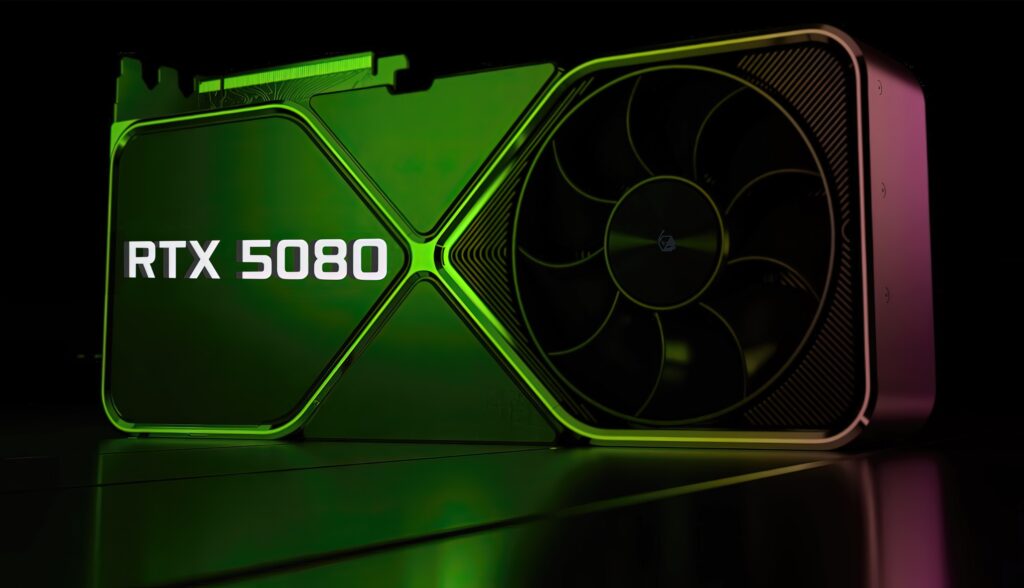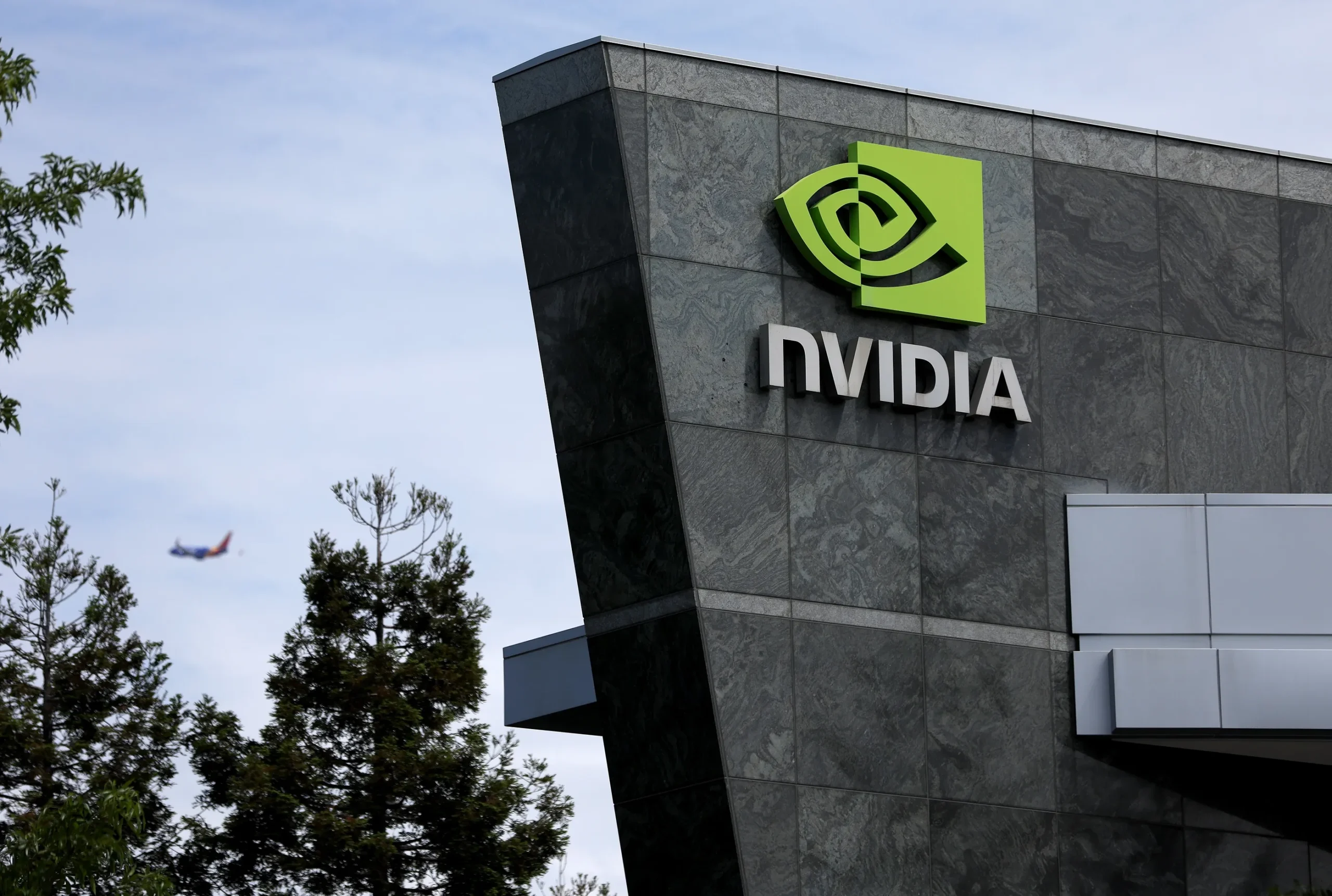January 2025 is going to be a huge month for gaming and hardware enthusiasts, with Nvidia reportedly unveiling its much-anticipated RTX 5090, 5080, and 5070 graphics cards at the CES 2025 event. According to sources, including Wccftech (which, by the way, stands for “Where Consumers Come First”—who knew?), Nvidia is gearing up to show off these new GPUs, and if the leaks are true, we’re in for some serious tech upgrades.
But let’s get into the juicy details: specs, power consumption, and, of course, the controversial VRAM issue. From what we know so far, the RTX 5090 is set to deliver powerhouse performance with a 600W power rating and 32GB of VRAM, making it a beast of a card. Meanwhile, the RTX 5080 and 5070 may not have as much fanfare, thanks to some eyebrow-raising choices by the green team—most notably, the 12GB VRAM in the RTX 5070. But more on that later.
| Specification | RTX 5090 | RTX 5080 | RTX 5070 |
|---|---|---|---|
| GPU Name | Blackwell GB202-300 | Blackwell GB203-400 | Blackwell GB205 |
| CUDA Cores | 21760 | 10752 | 6,400 (if fully enabled) |
| GPU SMs | 170 (192 Full) | 84 (84 Full) | 50 (if fully enabled) |
| Memory Capacity | 32 GB GDDR7 | 16 GB GDDR7 | 12 GB GDDR7 |
| Memory Bus | 512-bit (+33%) | 256-bit | 192-bit |
| Memory Speed | 28 Gbps | 32 Gbps | 28 Gbps |
| Bandwidth | 1792 GB/s | 1024 GB/s | 672 GB/s |
| PCIe Interface | PCIe 5.0×16 | PCIe 5.0×16 | PCIe 5.0×16 |
| TBP | 600W | 400W | 250W |
| Power Interface | 1 12V-2×6 (16-Pin) | 1 12V-2×6 (16-Pin) | 1 12VHPWR (16-Pin) |
What’s New with the RTX 5090?
If you’ve been eagerly awaiting a card that can handle 4K gaming, heavy AI workloads, and more, the RTX 5090 might be exactly what you’re looking for. Here’s what we know so far about the 5090:
- 32GB of VRAM: Plenty of room for modern games, AI tasks, and 4K video rendering.
- 600W Power Rating: Yeah, it’s going to be a power-hungry beast. Prepare to upgrade your power supply.
- GPU Architecture: Expect performance gains across the board, though details on this new architecture remain under wraps until CES.

The RTX 5090 is shaping up to be the ultimate choice for gamers, content creators, and tech enthusiasts who demand top-tier performance.
RTX 5080
While the 5080 offers more reasonable specs for those who don’t want to drain their bank account (or power supply), it still packs a punch. The rumored specs suggest:
- 16GB of VRAM: Not too shabby, but in the shadow of the 5090’s 32GB, it might feel a little light for some power users.
- Lower Power Consumption: You’re looking at a slightly more manageable power rating, but exact figures are still TBD.

If you’re hoping to hit a sweet spot between price and performance, the 5080 might just be your card. However, if you’re a gamer aiming to max out on ultra settings, particularly at 4K resolution, you might want to think carefully about whether 16GB of VRAM will meet your needs in the long term.
The RTX 5070 VRAM Controversy: Is 12GB Enough?
Now for the big debate: the RTX 5070 is rumored to ship with 12GB of VRAM, and, well, people aren’t exactly thrilled. Why? Because 12GB in 2025 feels a little… underwhelming, especially for a card in this range.
Here’s why this has sparked outrage:
- Games are demanding more VRAM than ever before. Some of the latest AAA titles are already using more than 12GB to run at ultra settings in 4K.
- Nvidia’s decision to previously unlaunch the 12GB RTX 4080 (due to backlash) hasn’t helped ease concerns. The 4080 was initially set to launch with 12GB of VRAM, but pulled it back after community complaints, opting instead to release a 16GB version.
So, why repeat the 12GB strategy with the 5070? According to PC Gamer, Nvidia is banking on GPU cache to handle the heavy lifting, claiming that fast, efficient cache will minimize the need for more VRAM. But will this really be enough to satisfy gamers who are used to pushing their systems to the limit?
Also Read: Man Learns He’s Dumped via AI Summary: Welcome to The 21st Century
What to Expect?
Let’s talk about the power consumption. RTX 5090 is rumored to have a power rating of 600 watts—yes, that’s as crazy as it sounds. You’ll need to factor in the additional cost of upgrading your power supply, and potentially your cooling system, if you plan to house this monster in your rig.
But it’s not all bad news. If you’re opting for the RTX 5080 or 5070, you won’t have to worry as much about extreme power consumption, but you will need to weigh the trade-offs in performance—especially in terms of that pesky VRAM issue.
Should You Wait or Upgrade?
Now, the big question: is it worth holding out for CES 2025 to upgrade your GPU?
If you’re eyeing the RTX 5090, it’s a no-brainer—this card is going to be the king of GPUs, and its 32GB VRAM ensures it will last for years to come.
For those considering the 5080, you’ll get great performance at a lower price point, but the VRAM might be a limitation for future-proofing.
As for the 5070, it’s a bit of a gamble. Sure, 12GB VRAM might be sufficient for some, but games are growing more complex by the day, it could feel limiting sooner than you’d like. Nvidia’s cache-focused argument isn’t winning over everyone, and you might find yourself needing an upgrade sooner than expected if you’re running high-end games at 4K.
Stay Tuned for CES 2025
With CES 2025 around the corner, you might be wondering if it’s really worth upgrading to the RTX 50 series this time. After all, not everyone is rushing to upgrade with every new generation of GPUs, and that’s fair. But Nvidia’s lineup—whether it’s the 5090 beast, the middle-ground 5080, or the controversial 5070—might still make some waves, especially with AMD likely gearing up to respond. Expect some fierce competition, and maybe a few surprises from the red team too. So, is it time to upgrade?
For now, I’m happy with my GPU, but I’ll need to see some benchmarks before deciding on this one.
More To Read: Why Bitcoin Prices Are Rising and What It Means for the Market

